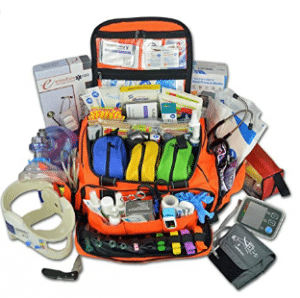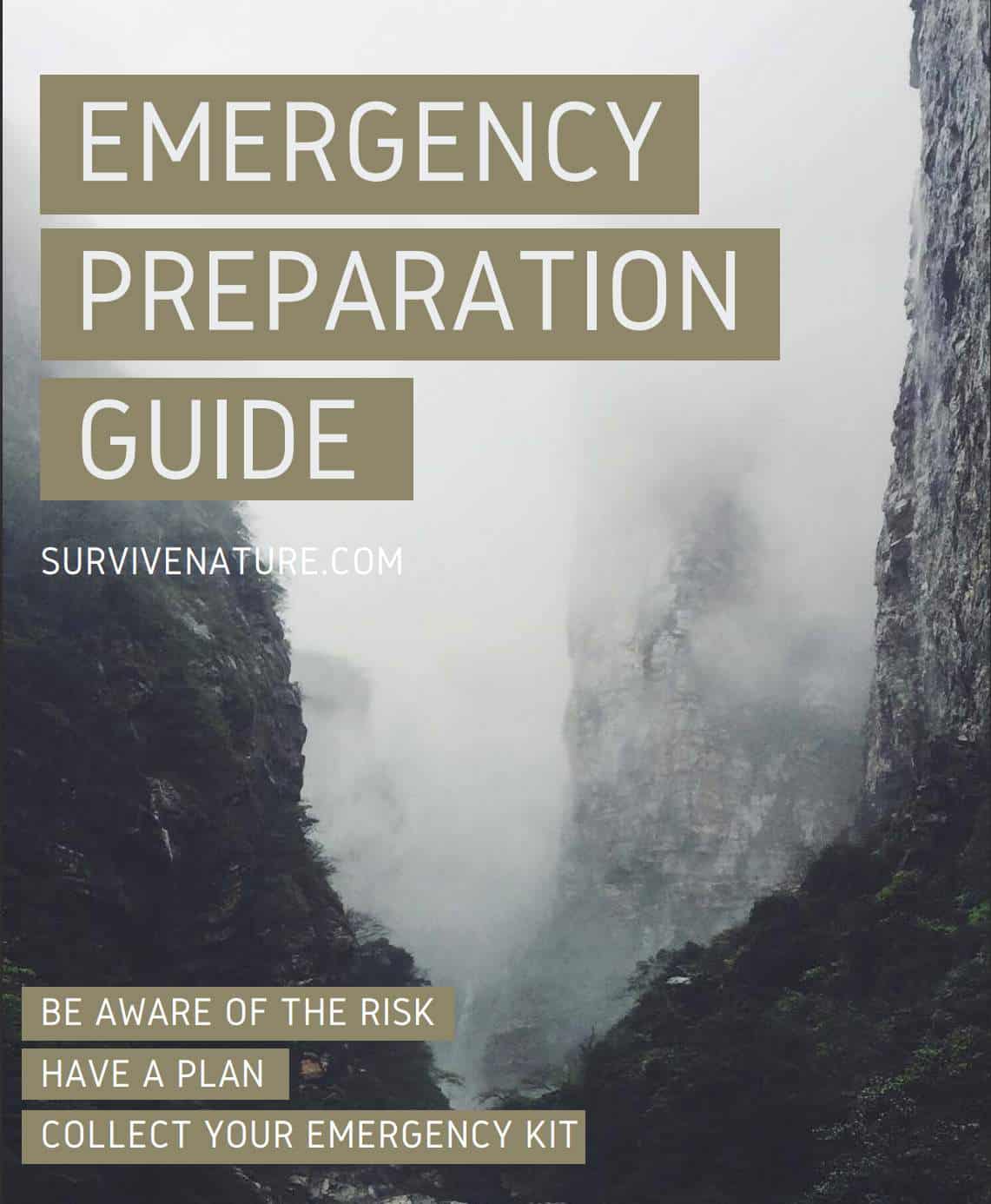Why do I need a trauma kit? When you are in a wilderness and receive injury, a first-aid kit is your way out. Far from civilization, this kind of survival gear can save your life. It will provide bandage once you are bleeding, instruments once you get a trauma in a combat with a ferocious beast or rival, will keep you alive until paramedics come and rescue you. Read on and learn all about trauma kits and the things concerned.
If you are currently looking for a modest trauma kit—or in case you strive to make your own one— then make sure to stay here and read the following article!
As for today, one can find various options for extraordinary trauma kits in retail. Overall, it is a good thing to carry with you while camping and traveling. However, with so many suitable options available, it can get tough to find the best option.
Let us apply our imagination. One may ask themselves: what’s the greatest trauma kit out there?
Which of the trauma kit devices are “must-haves” vs. “nice-to-have”? (Or even more important) – Which ones can I do well without? What’s the recommended overall weight of a full-fledged EMT trauma kit vs. an EDC trauma kit?
That is what this article is all about: we will show you everything we know about trauma kit essentials. We will help to answer each of your inquiries; henceforth, you’ll be able to create a perfect trauma kit for yourself!
Look into the survival prepping guide we provide for our readers. In our extensive blog we upload info about the first-class survival gear, survival skills to master, and a ton of other crucial facts for real preppers, effective homesteaders, and well-prepared survivalists!
TOP 10 Best Greatest Pre-Packed Injury Kits in Retail Today
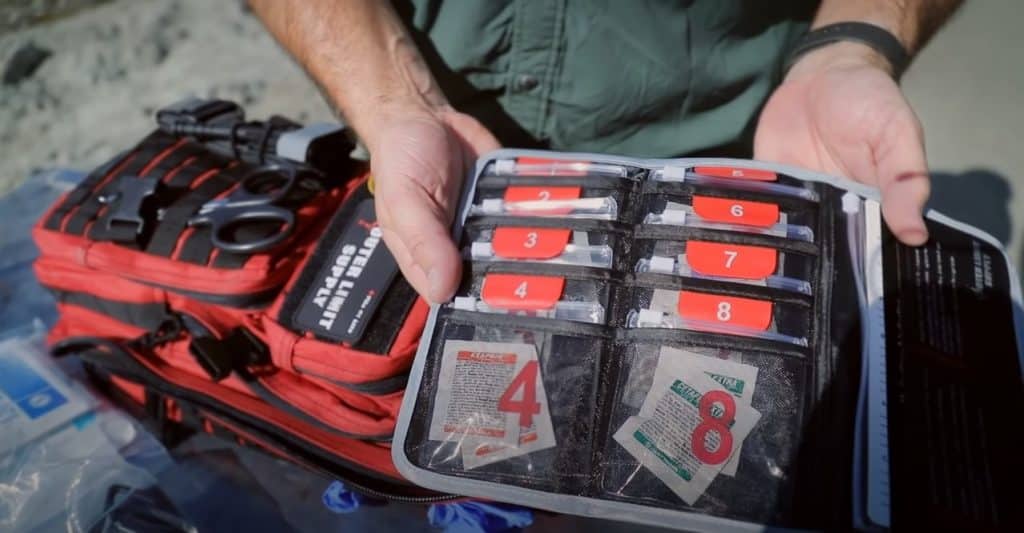
Since there are many employments for an injury unit, it bodes well that there are huge loads of various models available for every customer. These reach from EMT sacks for first responder groups to individual EDC injury units.
Here are the absolute best for every class from various brands:
Complete EMT-Style Kits
Lightning X Jumbo Medic Stocked EMT Kit
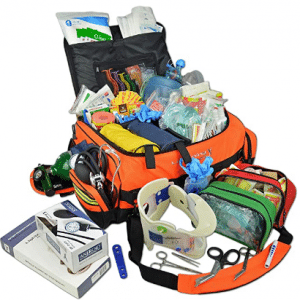
This first-response injury unit likewise includes an oxygen jug and regulator; anyway, this implies (because of government law) those gadgets are delivered void.
If you discover you would prefer not to carry the oxygen bottle, that space can accommodate other massive stuff. In contrast to certain packs, the sack seems to have additional room for future things and makes discovering gear simpler.
Advantages:
- Complete sack with a waterproof base and wide shoulder ties
- You can get to the oxygen cylinder from outside the sack.
- Additional room to add greater gear
Disadvantages:
- At almost 20lbs, this is a weighty item.
- The stethoscope isn’t incredible, so think about supplanting it with a more sensitive model.
- The oxygen tank is shipped empty (because the law prohibits shipping full). So you need to find a local source to fill the tanks.
Lightning X Premium EMT Kit
If you don’t need carrying an oxygen tank, the Lightning X Premium is a decent other option. And keeping in mind that you’ll be leaving out the oxygen tank, it permits you to bring considerably more supplies because the two Lightning sacks are almost a similar size; anyhow, the Premium pack highlights three shading-coded removable pockets—this assists with giving fast admittance to explicit things.
These pockets, alongside other inward pockets and stuff circles, make the Premium a simple-to-coordinate pack; nonetheless, it’s anything but difficult to overload this sack.
Additionally, as with most supplied units, the pouch comes unloaded. The customer needs to adjust the stuff themselves; anyway, gathering a pack is a decent practice, as it drives you to realize where things are taken care of before you need them.
Advantages:
- Full-constructed
- Accompanies a pulse monitor
- Removable pockets for quick admittance to basic things
Disadvantages:
- Difficult to fit BVM and c-collar into the pouch
- The stethoscope is of bad quality.
- Simple to stuff
LINE2design Elite Paramedic
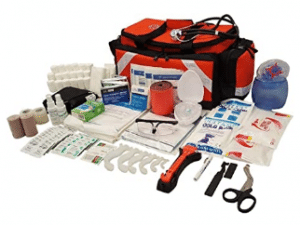
Furthermore, all things being equal, replace those provisions with removable pockets, e.g., devoted pockets that contain things for explicit capacities (ex. “airway management,” “bleeding,” and so on). Additional pockets joined with the large fold opening makes for a worthwhile mix.
Advantages:
- Large pack with very much spread out capacity compartments and can be carried on handle/shoulder ties.
- Other life-saving devices, for example, an automotive-glass hammer, included
Disadvantages:
- For such a huge pack, a few things are absent. These incorporate occlusive dressings and an oxygen tank
- No removable pockets
Medium Duty Kits
Lightning X Deluxe Stocked Large EMT Kit
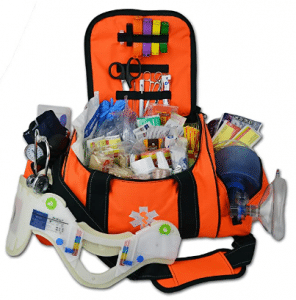
In case you’re searching for a superb average size pack, this unit from Lightning X may be ideal for you. It pretends to be a “huge” pack, yet it’s an individual vehicle size injury unit to a greater extent than a full EMT-style sack.
It includes a wide scope of tools, making it an incredible basic clinical injury pack. The inside compartments are all velcro, so changing your stockpiling to suit your necessities is quick and direct. The kit itself is very much easy to convey. It likewise accompanies strong zippers all through.
Advantages:
- An incredible base arrangement of provisions, including c-collar
- A resistant sack with quality materials
- Velcro compartments to arrange the essence
- Merges an injury unit and a broad medical care pack
Disadvantages:
- No occlusive dressings
- Not as extensive as different units – you might need to add more supplies to the base pack.
- The lower part of the sack isn’t waterproof – other more significant level models from Lightning X component a PVC base to the pack.
- The sack comes vacant, with a stock pack to fill it, so bag construction is on the person.
Rescue Essentials Stop The Bleed Kit
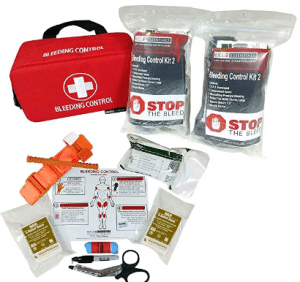
This brilliant mix puts two life-saving gadgets in a single area, without any difficulty to access them. The unit contains two equal sealed packs, and each pack accompanies a tourniquet and additional bandaging supplies; however, it could use the addition of some occlusive dressings. It is improbable to enhance these sealed first-aid kits.
Advantages:
- Compact design fits in most AED cabinets.
- Two separate bleeding control response units allow multiple subjects.
Disadvantages:
- No occlusive dressing for chest wounds
- Sealed response units don’t take into consideration adding extra things.
Tactical Medic Gunfighters Trauma Kit
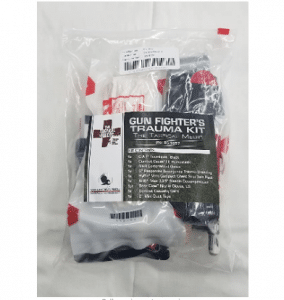
If you needn’t bother with an extravagant bag to convey your injury unit, this pack from the Tactical Medic is a decent choice.
The unit contains some top-notch parts, including:
- CAT tourniquet
- HyFin occlusive chest zone seal dressings (can be vacuum-sealed)
- QuikClot combat cloth
Be that as it may, it deserves valuing out the individual parts for this first-aid unit before making a buy. There’s a pretty powerful profit here, and you might have the option to assemble a comparable unit at a better price worth.
Advantages:
- Complete, top-notch injury unit in a basic resealable sack
- Lightweight because of the absence of bundling
Disadvantages:
- Costly for the matter
- A resealable bag is not a long-term solution for long haul storage.
Singular Kits
Lightning X Gunshot Kit
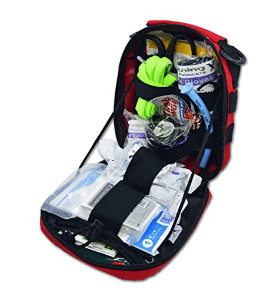
This dynamic shooter injury pack remains open at 90deg when appended to a chest or belt tackle. This unique characteristic provides a flat surface for one-handed operation.
Advantages:
- MOLLE gear loops to connect other stuff
- The engaged plan leaves out the extra stuff.
- Usability for one-handed treatment
Disadvantages:
- Hard to fit all provisions clinched without excluding others
- Just enough gear for one casualty in a shooting situation
Everlit Emergency Trauma Kit
In case you are about to pick an EDC injury pack, this one checks all the boxes practically.
The windlass-style tourniquet is broadly utilized in EMS and military and law enforcement injury packs around the world. So are pressure swathes and other blood-draining control things.
I like the expansion of a permanent marker to take note of the time a tourniquet was applied. This may appear to be a minor detail, yet it’s a very helpful one. Shockingly, it’s a gadget that other kits have generally overlooked.
It’s conservative, yet not all that firmly stuffed that you can’t get to any of the tools; unfortunately, a portion of the quality control is lacking. So, make certain to check the product cautiously for any imperfections.
Advantages:
- A smaller bundle with loads of attachment
- Adequately huge to effectively fit tools
Disadvantage:
- The tourniquet and dressing are not name-brand – might make some have quality concerns.
- The MOLLE webbing sewing is at times substandard – may need to reinforce
- No occlusive chest seal gauze
MediTac Premium IFAK Kit
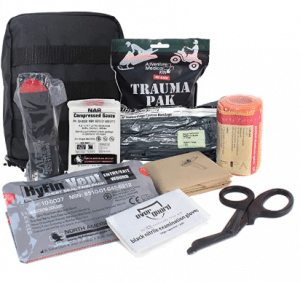
It likewise incorporates a moved SAM splint and a couple of injury shears, joined with three-sided bandages. These give custom splints to almost any appendage.
Advantages:
- Top-quality tools guarantee certainty.
- Space to add more parts
Disadvantages:
- Excessive pricing for singular unit
- Does not have airway aides and CPR cover
- The pack itself has some quality control issues.
Ever Ready MediTac Kit
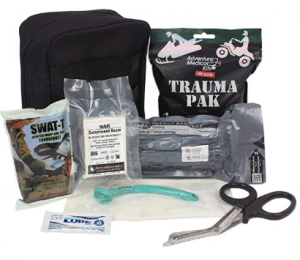
The TraumaPak contains a QuikClot clotting agent and absorbent bandages. The SWAT-T tourniquet is anything but difficult to utilize, while it can be made into little size. The packed dressing, Israeli gauze, and injury shears take into account bleeding control.
An astonishing increase to this little injury kit is a nasopharyngeal airway. This gadget is a welcome reward and assists with overseeing breathing issues for both cognizant and oblivious subjects.
Advantages:
- Complete basic injury unit in a little bundle
- NPA unit ensures the airway
Disadvantages:
- Does not have occlusive chest tape dressings
How to Create an Injury Kit From the Basis
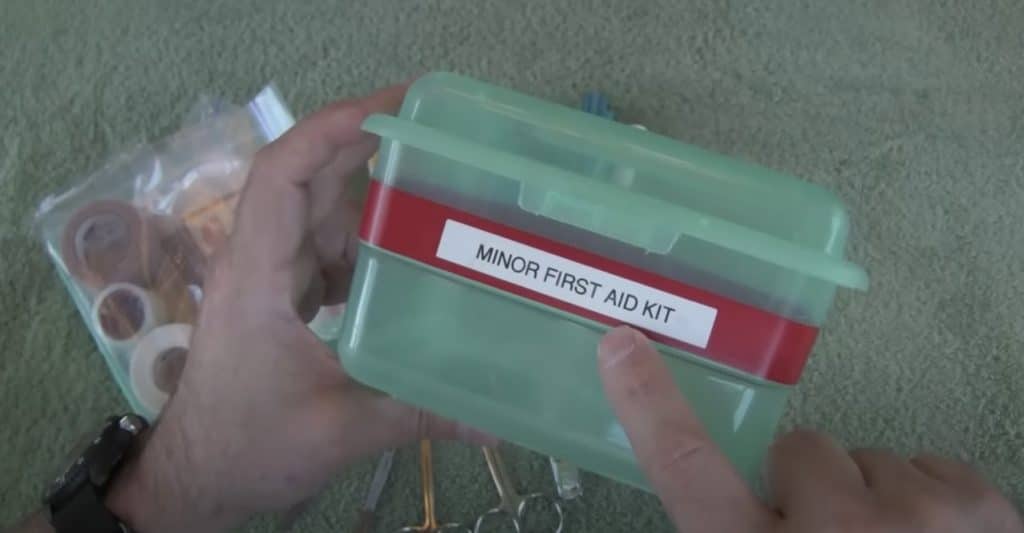
Possibly you’re the sort of individual who appreciates modifying all your endurance gear. For this situation, you should consider building an injury unit for your own necessities. No comments. This is totally necessary!
It’s not as hard as you would suspect, and it forces you to choose each bit of stuff clinched. You’ll rapidly find there are things you feel enthusiastic about and need to pack more.
A portion of these pack assembles will, in general, follow the shape of an EMS clinical supplier. This pattern typically implies building a more broad pack with more stores. These packs are extraordinary; however, they’re regularly too huge to even think about carrying a long way from a vehicle. Others are more qualified for the survivalist attitude, where size and weight matters.
These packs often decrease larger items, especially if you can improvise them using materials in the field. There are even budget builds.
The injury unit starts by trying not to buy a costly pack. At that point, keeping the injury stocks zeroed in on the most basic parts to keep costs sensible. If you and your friends want to create comparable emergency kits, you can buy in mass and offer the expense.
Injury Bags Options
When you understand what sort of injury pack you intend to assemble, you’ll need to locate the correct bag to contain it. Once more, this is an individual decision, yet consider how and where you intend to convey your unit.
If it’s mostly going to live in your vehicle, a “gym bag”- style will function admirably and give a lot of room. Anyway, on the off chance that you intend to wear it on your strategic belt or append it to another pack, you’ll need to search for MOLLE webbing.
Aurelius Large Capacity Responder Bag
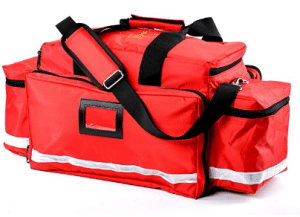
The wide opening and various fold pockets permit you admittance to all your gear and supplies without a moment’s delay. This trauma kit assists with forestalling, burrowing through everything to discover little things.
5.11 Tactical UCR IFAK Bag
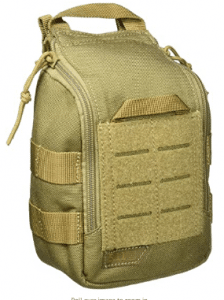
Injury Kit List – Trauma Kit Contents
While this is not a comprehensive summary, these injury unit supplies give your injury pack a great base. Supplement them with extra bandaging and wound care tools, particularly as you advance your clinical preparation and aptitudes:
- Tourniquet
- SAM Splint
- Gauze Pads
- NPA kit
- Permanent Marker
- Active Clotting Agent
- Surgical Shears
- Clotting Gauze
- Compression Bandage
- Occlusive Chest Seal Dressing (Halo)
- Occlusive Chest Seal Dressing (HyFin)
- Hemostats
- Cohesive Bandage
- Non-latex Gloves
Trauma Kits VS. First Aid Kits
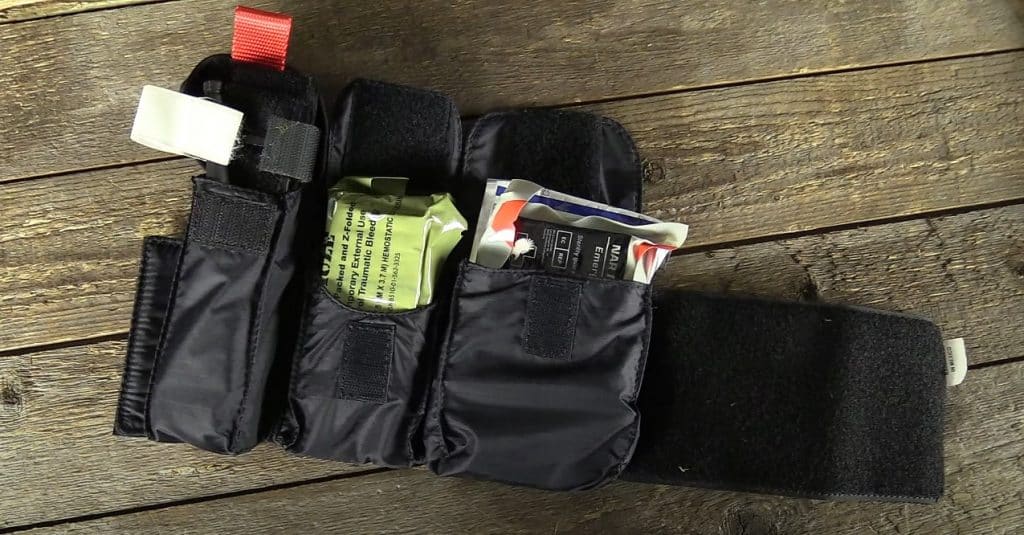
From the onset, it is easy to befuddle a trauma kit with a first aid kit, as in essence, both are packs brimming with clinical components. What’s more, they may even contain a portion of similar gear.
So to comprehend the distinction, you should take a gander at the hidden focal point of each sort of medical kit. Most importantly, the FAK is intended to treat simple, shallow damages that individuals endure each day: they help with little cuts, scratches, and stings that do not need a clinic or any medical specialist. These are the sort of wounds frequently treated with a medical aid pack; moreover, most emergency treatment packs incorporate wraps, burn cream, germicide, and over-the-counter prescriptions.
A trauma kit is then intended to sufficiently treat serious, dangerous wounds, so when a proficient consideration (doctors, etc.) arrives, we could sustain the injured. We are discussing dangerous wounds from auto crashes, bullet wounds, etc.
Catastrophic occasions when getting someone stabilized and moved to a hospital can be absolutely critical: in such circumstances, most emergency treatment packs are not quite enough, but a strategic emergency unit is ideal.
It’s essential to remember that a trauma kit aims to save lives; besides, they regularly give up things that can ease the injured ones’ sufferings. Why? Because it’s a pack consisting of life-saving instruments intended to keep somebody’s essential capacities working!
What is Incorporated in a Trauma Kit?
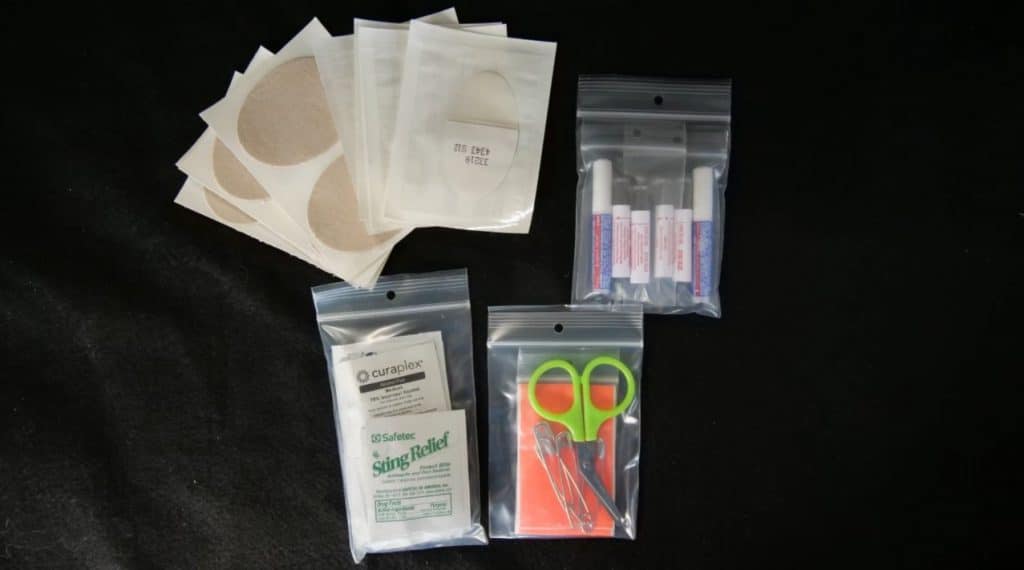
To comprehensively get knowledge about what a trauma kit is, we should investigate its essence.
Airway Adjunct Devices
Most injury packs contain, in any event, one “airway assistant,” so make sure to add it to your wish list.
An airway adjunct aide is a gadget that assists somebody with keeping their airway route open. Since you cannot inhale for some period, you kick the bucket in practically no time, frankly. The items keep an airway open if a casualty has experienced a critical injury or they’re experiencing a type of hypersensitivity stun.
There are two principal options of airway aides:
Oropharyngeal Airway – OPA
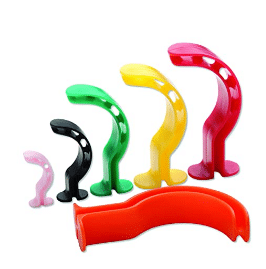
Nasopharyngeal Airway – NPA
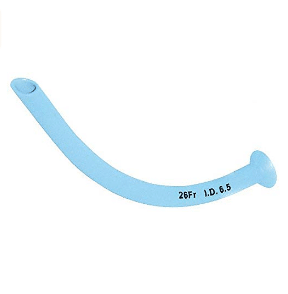
First-Aid Kit Devices for Breathing
When a patient has a clear airway route, they should keep getting oxygen to their lungs. Now and again, this may even require assisted breathing:
Hindrance Mask
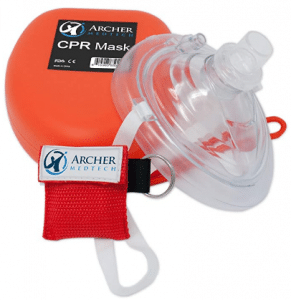
Bag Valve Mask – BVM
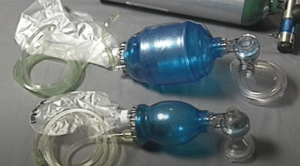
Another one, a BVM mask, is a far better choice than a hindrance mask, as it is a lot less tiring to wear, and it promotes the delivery of oxygen better off.
Occlusive seal bandage
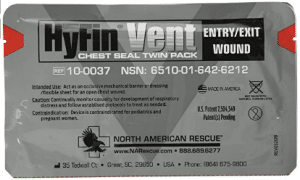
Bleeding Control Devices
Injury units frequently contain customary dressing and gauze materials. Besides, they additionally comprise progressed approaches to control excessive bleeding:
Coagulating Agents
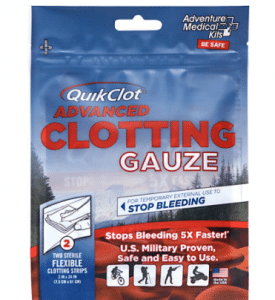
Hemostatic Dressings
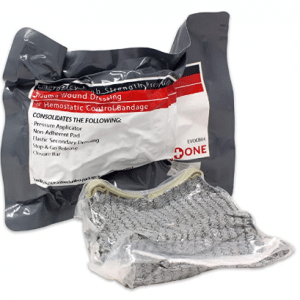
Strategic Tourniquet
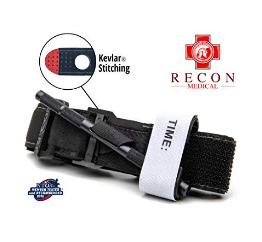
Indelible marker

Injury Devices
At last, most injury kits additionally contain a small selection of tools. These instruments help make the expulsion of dress and getting to the injury simpler:
Injury Shears
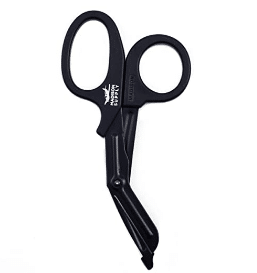
Penlight
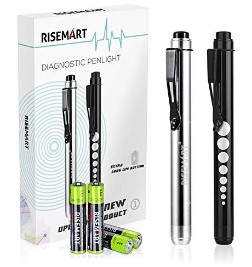
Hemostats/Forceps
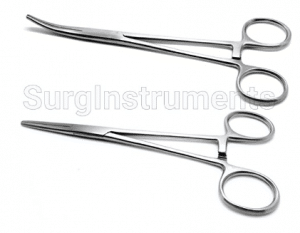
We are distributing our Full Survival Gear Guideline. Snap Here To Get Your Free Sample of it!
Why is the Trauma Kit Necessary?
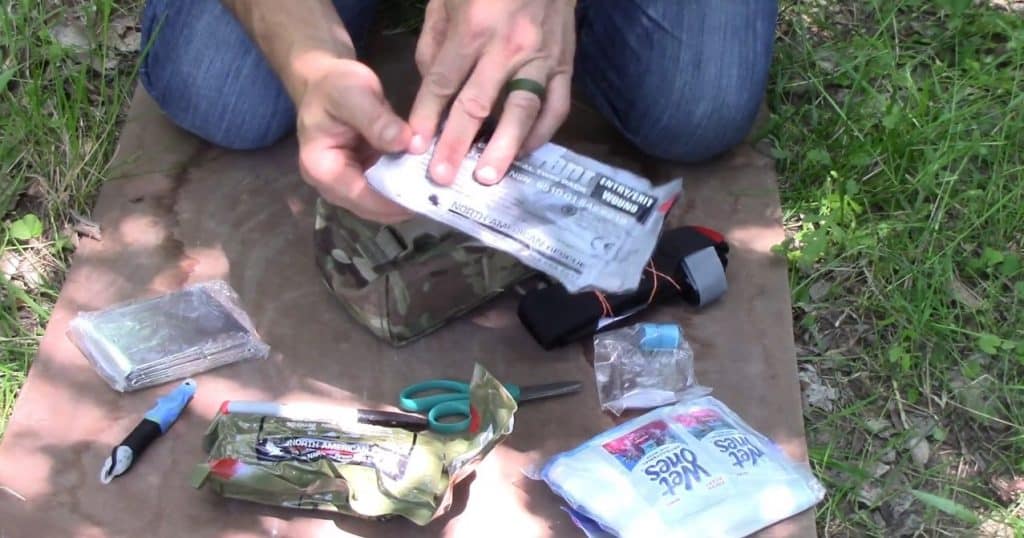
- Hunting
- Endurance
- Search and Rescue
- Wild Medical Circumstances
Shockingly, the chances of confronting a shooter are on the ascent these days, but anyway, something may happen, you know. In these situations, seconds matter the most, and your capacity to act may save your life. Having a well-planned injury pack as a component of your EDC lets you react right away! There are various components in those emergency packs, and they differ for different brands: Iron Duck, North American Rescue, etc. Some of them even have subdivisions within the brand, e.g., Eta Trauma Kit with its ITS ETA Trauma Kit Pouch (Fatboy) and ITS ETA Trauma Kit Pouch (Tallboy).
Strategies to Use An Emergency Kit Efficiently Under Coercion
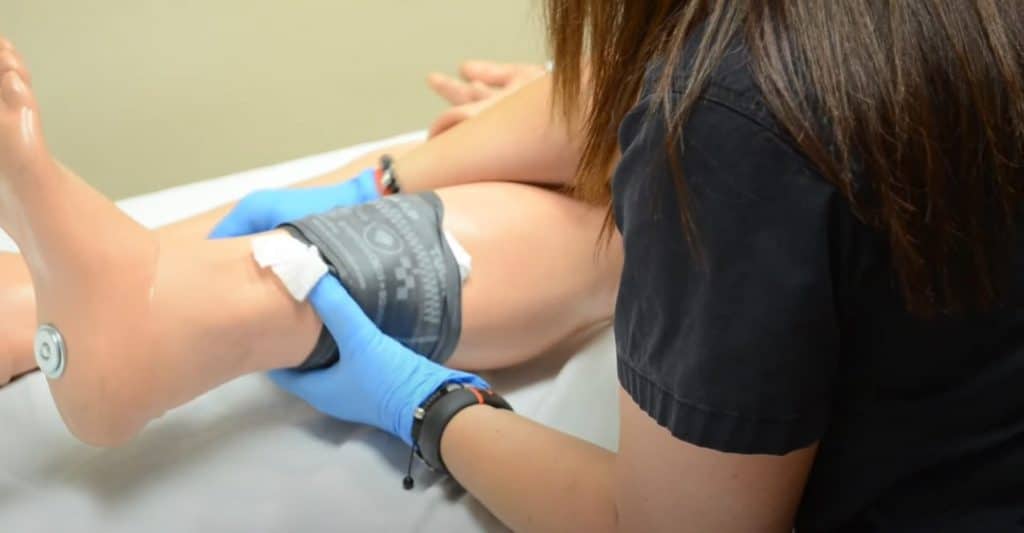
You should be prepared if you might need to save lives with your injury unit. Figure out how to utilize all the individual parts in advance.
Ensure you have the basics down first. It’s anything but difficult to track down online orders and delivery, that one can find on any Internet site. Those sites might actually advise subscribing to their newsletter or their email, so one could use their personal inbox on the website’s page to find the orders one made. It is important to track this information to stay up with the latest on innovation and conventions.
Numerous injury units follow the MARCH abbreviation system:
- M: Massive Hemorrhage
- A: Airway Control
- R: Respiratory Support
- C: Circulation
- H: Hypothermia/Head Injury
The MARCH structure organizes medicines and improves good results. Mental aides like this are far simpler to use in high-stress circumstances. This will boost your memory when you can’t remember what comes right away.
There are other strategies used in hospitals and EMS’s foundation; however, these clinical training videos are often better suited to using the tools than the user-supplied vids.
For this situation, the active clotting agent dressing and subsequent bandaging are efficient. As usual, in-person preparation is the best since they will, in general, better drive the exercises home.
Search for outside schools, ski patrols, and neighborhood bunches that offer first responder training. Some of these groups have ongoing training that can keep you up to date; besides, they allow you to learn in a group environment, which allows you to work in a team.
It could justify sorting out a class at work on the off chance that those listed above aren’t accessible.
Numerous companies understand the advantages of preparing employees to react to crises. Employees can react quicker than experts; additionally, a learned labor force far exceeds the obligation of having many confused and bewildered workers in the midst of bedlam.
The Most Crucial Peculiarities in a Quality Injury Kit
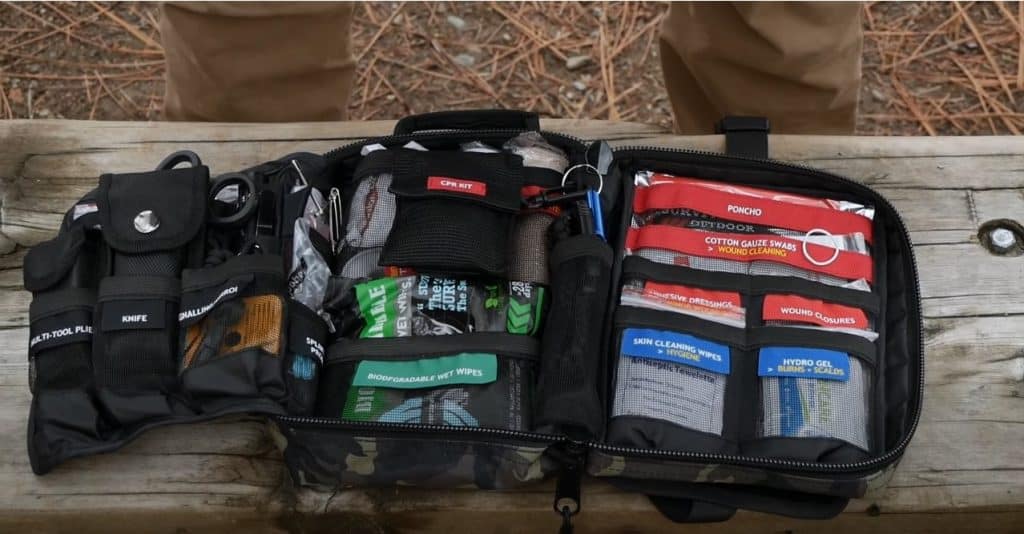
Kit Price
Price is consistently a thought in survival gear or bag choice; fortunately, an injury pack’s essence can last forever. Why? Since they’re inconsistently utilized and will, in general, be very well-built gadgets. Perhaps the greatest expense with any injury pack is simply the sack. Also, strategic tourniquets and any devices (shears, hemostats, and so on) can likewise be costly; notwithstanding, emergency treatment stocks, for example, gauzes, are anything but difficult to track down online for sale.
So choose a budget that’s OK for you, but like most things in our experience, you get what you pay for…
Organization of a Kit
For an injury unit to work easily and insightful stuff, the organization is basic, ensuring you put resources into a quality pack with a natural organization. Thus, you need quick access to aid when somebody (even yourself) is truly harmed: life-saving stuff should be readily available.
That is the reason your pack ought to have committed compartments. That way, you can arrange it through the various periods of the MARCH system. This structure will likewise help strengthen the succession of treatment steps.
Some injury packs highlight removable modules. These permit you to hand off treatment steps to other colleagues as important, or on the other hand, to keep the primary essence of your pack shielded from the components.
*ATTENTION*
There is an almost insufficient difference between not having enough compartments and having too many. Such a large number of parts can add disarray and pack weight, the two of which will back you off in a crisis.
Concentrate on making it as simple as possible to discover your injury unit supplies. Also, think about using diverse colored modules. This system can make it quicker to get the correct gadgets without a lot of struggle.
First-Aid Kit Size and Weight
The kind of injury pack partly determines the size and weight. For instance, an EMT injury pack is made to react to almost any injury. Yet, they are not set up to go extremely distant from an ambulance.
Why? Since they’re large and hefty; however, these EMT units contain everything (even packaged oxygen and compact defibrillators). Then again, an EDC combat injury pack is intended for use in a war zone. That is the reason they are smaller for conveying everywhere except they can just treat the essentials.
Key Kit Contents
As we noted before, a quality unit will contain the provisions to:
- control major bleeding
- airway control
- circulation control
At the very least, tourniquets, battle gauzes, occlusive dressings, and airway adjuncts should all be available; moreover, it will likewise require a decent load of clean gloves, facemasks, bandages, and other consumable products. From that point, it thoroughly relies upon what circumstances you expect you may face.
Strength
Except if you’re an officer or an EMT, your bag will probably spend most of the time behind the seat in your truck then it will be used; however, when it comes time to utilization, you need to have certainty that it’ll be fit as a fiddle and not self-destructive. Most injury units utilize tough Cordura nylon and have great zippers and clasps.
After you utilize your injury pack, give it a consistent washing before restocking and returning it to support. A compact sack will face numerous outings through the clothes washer far superior to a cheap-built sack.
Nature of Equipment
Once more, this is life-saving gear, so your injury unit isn’t a spot to compromise:
- Purchase quality shears and careful evaluation hemostats
- Search for military tourniquets and great clotting agents
- Buy a lot of bandages and gloves that fit.
- If you are training how to use a blood pressure cuff and a stethoscope, be sure to buy the ones that get high marks.
The distinction in quality can be tremendous in accuracy gear!
Trauma Kits for Pets & Various Animals
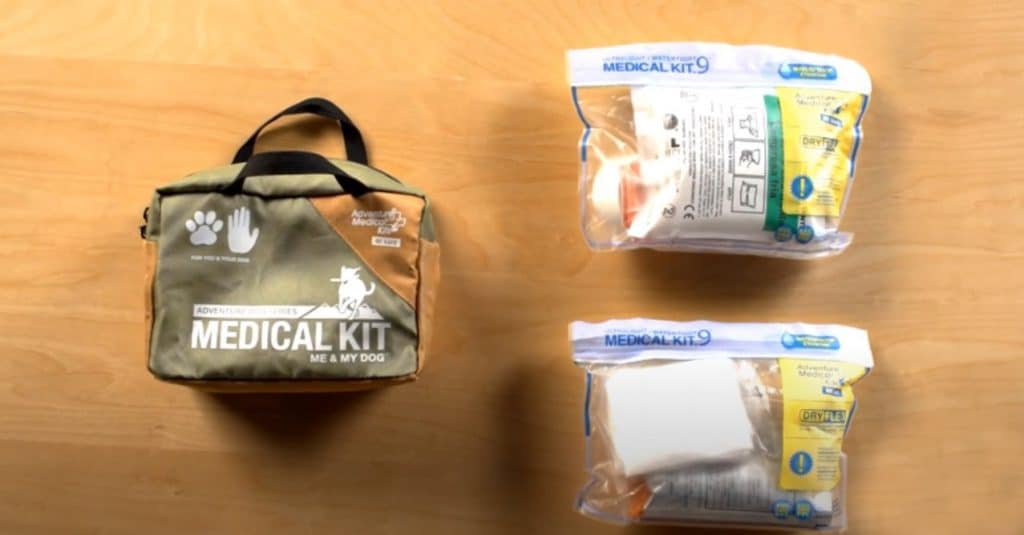
You can discover pet-explicit injury units available, and they contain a considerable lot of similar things as a standard pack. It’s regularly not justified to convey a completely independent clinical supplies arrangement when the requirements for use are the same.
The clinical medicines and the MARCH systems apply as many to a golden retriever as they do to humans. The essential issue in treating injury in an animal is the communication barrier.
A quiet environment, soothing tones can help to build up trust. Whenever you or your family contact an animal, a collar or slip-lead can look after them.
Tenderly muzzling a pet is likewise a smart thought by and large to give wellbeing to all included. A naturally meek pet may turn brutal when harmed. Thus, in this mood, they may endanger themselves and anybody attempting to treat them.
However, the design of many traumatic medical supplies is specific to human use. So, they may not fit the diverse body states of an animal.
For instance, oxygen and pet-explicit veils are more normal at this point. EMTs, in numerous urban communities, convey a couple of dog injury pack supplies in their ambulances. They have committed pet injury veils that are useful when a mishap scene includes a pet.
Some of the time, you can improve gear or change it to fit a pet subject.
For instance, a strategic tourniquet may not be estimated little enough to circumvent a dog’s leg. So a belt or cravat style tourniquet may be useful.
Also, you can frame a SAM Splint to pretty much any shape fundamental. This adaptability makes them important for treating both human and animal wounds; similarly, as with all clinical treatment, look for appropriate preparation first and practice frequently.
If your animals permit it, practice on them; this way, it will get both of you more acquainted with the cycle and decrease pressure if you actually need to do it in a crisis.
Best Trauma Kit Summary
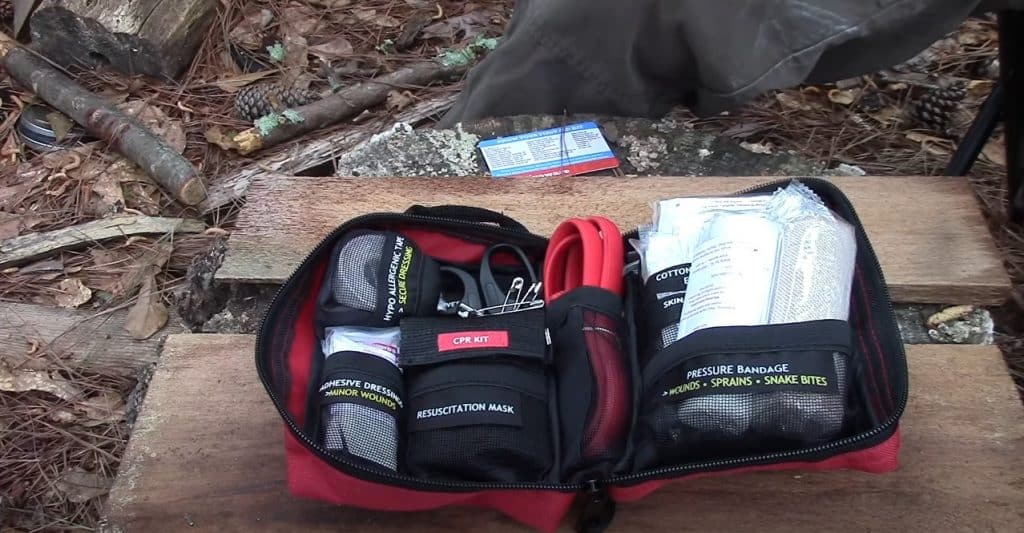
An injury unit’s essential mission is to balance out a subject after a terrible injury. Frequently, the damages have to be treated rapidly until medical consideration at a clinic or with paramedics.
You may not think your day brings you into circumstances where an injury kit is important. Anyway, even your drive to work can put you in the area of an auto crash. Also, ideally, there’s somebody close by with an injury pack even before any EMT appears. Mass shootings, mechanical mishaps, and even animal disturbances all profit by having an injury unit on-scene.
An ideal approach to do this is for additional individuals to convey an injury pack with them and figure out how to employ it! Regardless of whether you construct your personal one or get one pre-created, an injury pack should be important for your crisis survival plan.
Frequently Asked Questions – FAQ
What Should be in a Trauma kit?
The essential things are medication, a tourniquet, chest seals (a halo vent seal), wound packaging, and an airway protector. Some other kits include such special products as nitrile gloves, a shoulder strap, a duty belt. Those essentials packs are intended to manage life-threatening wounds, commonly dangerous, and keep somebody alive until professional clinical help can be reached.
What is a Trauma Kit Used for?
It’s crucial to have an all-around loaded medical assistant pack in one’s house so that you can manage minor mishaps and injuries. Your emergency treatment unit must be secured and held in a cold and dry spot out of the sight of youngsters. Numerous individuals additionally keep a little medical aid unit in their vehicle for crises.
One can use FSA funds on prescriptions for needed medication for emergency kits, as well as over-the-counter medicines.
What is the IFAK kit?
The Individual First Aid Kit expands individual warfighter capacities to give Self-Aid/Buddy-Aid and gives mediations for several occasions, like death on the battlefield, severe hemorrhage, and insufficient airway. Initially, they were used by law enforcement and military personnel.
The present IFAK is, to a greater extent, an injury pack than a first responder. Nowadays, they are used by ordinary people such as survivalists or people having special training for emergency help situations. All things being equal, it is intended to address prompt life-dangers, for example, exsanguination (seeping out), airway and breathing issues, hypothermia, and so on.
What are the 10 Items in a FIK?
A fundamental medical aid pack may contain:
- mortars in a wide range of sizes and shapes
- little, medium, and huge sterile compress dressings
- at any rate 2 sterile eye gauze
- three-sided gauzes
- dispensable sterile gloves
- tweezers
- thermometer (ideally computerized)
- cream or shower to mitigate bug nibbles and stings
- painkillers
- antihistamine tablets
It may likewise be valuable to keep a basic emergency treatment manual or guidance booklet with your medical aid pack. Meds should be checked consistently to ensure they’re inside their utilization by dates.

